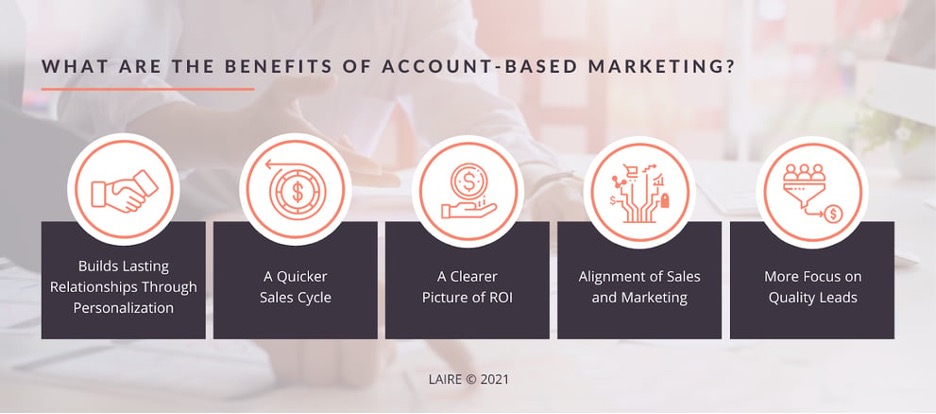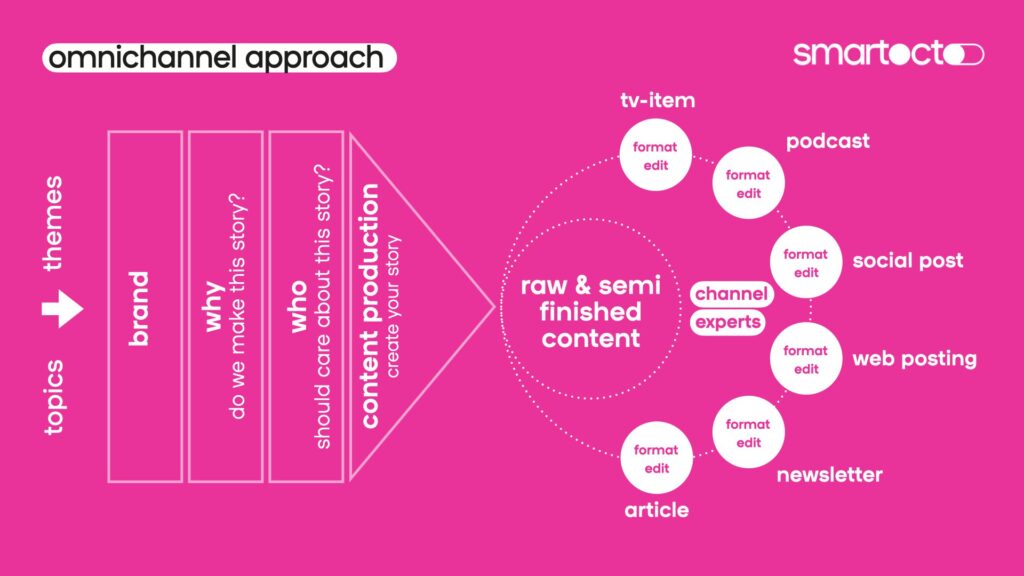Marketers in the manufacturing industry face a competitive environment filled with skeptical, knowledgeable buyers who have many problems and little time to listen to sales pitches.
To stand out, account-based marketing for manufacturers is one strategy that can help B2B marketers identify and connect with these buyers and better understand how to address their unique challenges.
However, ABM is very different from traditional marketing techniques. It requires a different kind of research and customer knowledge. Rather than casting a wide net, you’ll focus on hunting whales with a sharpened spear.
To help you on your ABM journey, we’ve created today’s guide that will walk you through the process of creating an effective ABM campaign from start to finish.
Key Takeaways:
- ABM for manufacturers starts with deep buyer research that should unveil much more than just a name and job title.
- Your ABM marketing content will need to be personalized and valuable from the outset.
- Done correctly, an ABM campaign can lead to increased ROI, streamlined sales and marketing, and improved customer relationships.
The Basics of Account-Based Marketing for Manufacturers
Account-based marketing is a marketing strategy that involves targeting specific high-value accounts with custom marketing materials and communications. The goal of ABM is to convert these high-value accounts and form long-term relationships that result in mutual growth via continued business.
The Benefits of ABM for Manufacturers
Today’s companies spend about 9.5% of their revenue on marketing, yet 23% of CMOs feel their strategies lack customer understanding and experience management. In an environment where every dollar matters, ABM is a perfect strategy for more efficient marketing spend that focuses on the customer experience.

An excellent ABM strategy can result in:
- Increased ROI: Focusing on high-value accounts streamlines efforts and improves the efficiency of marketing content.
- Improved alignment: Sales and marketing can use ABM to synchronize KPIs, communication strategies, and approaches to target accounts.
- Better customer retention: ABM is all about creating authentic relationships with buyers, resulting in long-lasting partnerships with higher customer lifetime value (CLV).
Setting the Stage for ABM Success: Identifying Target Accounts
Your first step when creating an ABM strategy is to identify your target accounts. To do this, you’ll want to start with a buyer persona.
A buyer persona is a profile of your ideal customer. It can include any information that helps you understand their needs and preferences. Essential pieces of a buyer persona include:
- Name
- Contact information
- Company name
- Job title
- Buying criteria
Remember that you’re trying to form an authentic personal relationship. Learn about the buyer’s job responsibilities but also their personal life: their career goals, daily challenges, and how your solution can make their lives easier.
How to Identify Buyers
To find this information, you’ll need to perform some research. Here are a few tips for locating your buyers and learning more about them:
- Research the company to identify decision-makers: Learn as much as you can about the company’s internal hierarchies and decision-making process. Your ABM materials need to target people within the company who can close deals.
- Leverage industry events as networking opportunities: Get to know potential buyers through in-person networking at conferences, events, and trade shows.
- Use social media as an intelligence tool: LinkedIn, Instagram, and Twitter are great places to get to know your buyers on a more personal level.
Four Steps to Personalize Content for Your ABM Campaigns
Without personalization, your ABM content will feel generic, uninspiring, and even out of context.
Here are four steps you can follow to create personalized marketing content for your ABM campaigns.
1. Learn the Needs of Your Target Accounts
You’ll need to spend some time to acquire a deep understanding of your target’s pain points.
Review the company’s website and social media profiles to get an understanding of their positioning and goals. Look for relevant case studies or reports that address challenges you can help with and get a feel for how this company is currently solving those problems.
Dekker Fraser’s useful video explains one method for carrying out the process of buyer research:
Source: Dekker Fraser on YouTube
2. Directly Engage the Buyer through Multiple Channels
Though you are targeting the company, the buyer is ultimately who you need to convince. Create content that focuses on helping the buyer understand why your solution is right for them on a personal level.
What sorts of problems does this buyer face in their daily workflow? How will your solution address this? What kind of ROI can they look forward to?
You’ll need to be able to reach the buyer through any channel they prefer and at any time of day. So, focus on creating content that is effective for ABM strategies, including whitepapers, blogs, case studies, personalized videos, webinars, and infographics.

3. Leverage Positive Feedback
A great way to speak directly to a buyer’s needs is to demonstrate that you’ve successfully helped others like them. Reach out to past buyers and ask for feedback on how your solution has helped them in their daily lives and their experience working with your company.
This kind of feedback is authentic and relatable and a great way to earn the trust of skeptical buyers.
4. Consider Working with a Marketing Agency
Developing personalized marketing content can take time, effort, and experience that you may not have. For best results, consider engaging a professional marketing agency to develop your ABM content strategy.
They can help you understand your targets, how best to communicate with them, and how to deliver information and build value at the same time.
Whether or not you choose to work with an agency, your ABM content should be capable of building a loyal audience that trusts your brand and understands that you are more than just the price of your services.
Measure Your ABM Campaign and Optimize as You Go
Executing an ABM campaign for the first time will reveal roadblocks you didn’t predict, but that’s a normal part of the process. We recommend running ABM campaigns through a continual process of review and optimization.
Gather all stakeholders together and agree on a clear strategy along with a few metrics everyone can agree on to measure success. We recommend tracking things like content engagement, conversion rates, and ROI to ensure your efforts are yielding positive results.
Regularly return to your strategy sessions to review and optimize your approach. Don’t be afraid to make changes on the fly as data comes in. The most important thing about ABM is that you’re effectively reaching buyers and forming personal relationships. If you can do this while directly addressing buyer needs, results will come.
Need help with your next ABM campaign? Let’s have a conversation about how Shanahan Strategy can help you connect with buyers and maximize your ROI.

